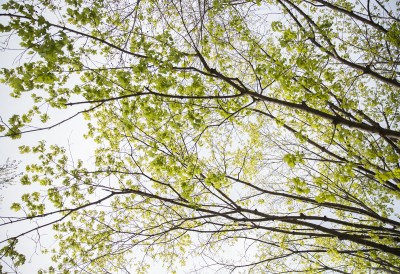
Carbon dioxide emission can accelerate the growth of plants and make the earth “greener,” but that effect will not last long or compensate for the damage of the greenhouse effect, according to a Monday release in the Nature Climate Change.
The research further found that the greening that had been happening over the past 33 years is “equivalent to adding a green continent about two-times the size of mainland USA and has the ability to fundamentally change the cycling of water and carbon in the climate system,” said lead author Zaichun Zhu, a researcher from China’s Peking University, in the release.
Titled “Greening of the Earth and its drivers,” the research, co-authored by Boston University Professor Ranga Myneni and 32 other scholars across the world, analyzed the impact of carbon dioxide by going through decades of satellite images provided by the NASA, Myneni said.
“If you look at Earth from the space, you will see a lot of blues, some deserts, and the rest are mainly forests and vegetation,” Myneni, a professor in the College of Arts and Sciences Earth and Environment Department, said. “NASA’s satellite takes picture of the earth once every 24 hours, and we used that to analyze if the earth has become, quite literally, greener with increasing carbon dioxide emission.”
Myneni said that many people looked at the study and left with the conclusion that carbon dioxide is good for the earth, which is not true. Although carbon dioxide does have a positive effect on vegetation, it is unclear how long the effect will last, and the positive effect is not even close to the damage that global warming does to the ecosystems.
“Carbon dioxide has a nourish effect on the plants, [which] makes them grow faster and greener,” Myneni said, “but the increase of carbon dioxide emission cannot infinitely lead to a greener planet. There are other limitations and factors such as nitrogen, so we do not know how long it will last.”
Michael Dietze, also a professor in the CAS’ Department of Earth and Environment, said the result of the research is not a surprise because vegetation is acting as a “service” for the ecosystem by taking up a third of the carbon dioxide that is emitted yearly.
“If [vegetation] was not happening, then the concentration of the carbon dioxide in the atmosphere would be that much higher,” Dietze said. “It would be that much further along the course of climate change.”
Dietze added that the role of the vegetation is more efficient than any available technology.
“[Technology] is considerably more expensive than the services provided by vegetation for free,” he said.
Regarding the volume of carbon dioxide in the atmosphere, Dietze said he believes it is important to understand that the uptake of carbon dioxide is beneficial to society, but not necessarily to nature.
“If these systems have evolved under certain levels of atmospheric carbon dioxide and you increase that atmospheric dioxide, [it causes] some to grow faster than others,” Dietze said. “Then you’re shifting the composition of the community in favor of one group over the other, and that tends to result in a reduction in overall biodiversity.”
Several BU students studying environmental science said they were interested in the study but agreed that it is too premature to determine the long-term effects of the study’s findings.
Clara Kim, a freshman studying environmental analysis and policy in CAS, said the term “greener” should not always be considered better.
“Things tend to be greener in the summer [temperatures],” Kim said. “While green is generally good, we have to account for the loss of arctic and alpine regions, which would be a huge hit to biodiversity.”
Linnea Smith, a sophomore studying ecology and conservation biology in CAS, said the problems with an increase in the level of carbon dioxide is its effect on organisms that rely on a stable climate system.
“We do know that the warming caused by increasing carbon dioxide is deadly to many species,” Smith said. “Increasing greenery means that whatever less-green habitat was there before is no longer.”
Qiyuan Fu, a junior studying environmental science and international relations in CAS, said she is unsure of how to view the concept of a “greening earth” and fertilization.”
“[The topic] needs to be studied further,” Fu said. “Specifically as to the implication of having a greener planet and how it will impact animals who dwell in these regions with greener vegetation, and us humans too.”
























































































































Philip Haddad • May 1, 2016 at 5:38 am
CO2 is not the cause of global warming. Global warming started around 1900-1920. See http://www.pbs.org/wgbh/warming/etc/graphs.html. The CO2 was 300 ppm. The identifiable cause was the increase in the use of fossil fuel (mainly coal) to 1 terawatt and has increased steadily passing 16 TW in 2008. Fossil fuels are burned solely for their heat content, and along with nuclear power, the heat emissions are more than four times the amount that can be attributed to the rise in air temperature. The CO2 myth is largely based on models that had assumed that the correlations of CO2 and air temperature proved CO2 was the cause, rather than being a secondary by-product of the combustion. The obsession with CO2 has led to proposals for CCS (carbon capture and storage which is totally counter-productive) and for building of more nuclear power plants(which emit twice as much waste heat from their reactors as they convert to electricity). We must replace fossil and nuclear with renewable sources and leave CO2 to continue greening the earth.